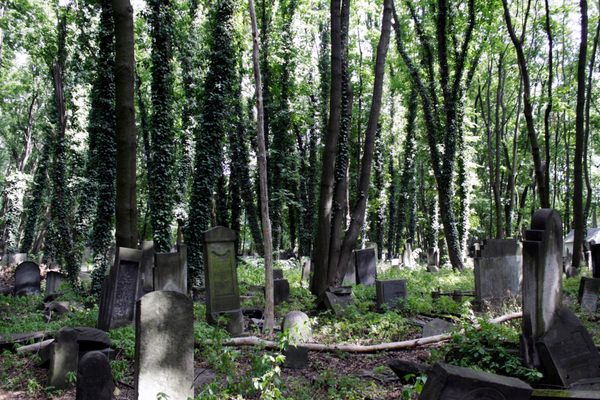About
Jewish people have lived in Mazovia, a region in east-central Poland, since medieval times. In the 18th century, the Jewish community in the province grew in size, and made up a significant portion of the city of Warsaw’s population. In 1806, a cemetery was established outside the city’s okopy, or trenches. As the city grew, the cemetery came to be inside the city limits and Okopowa Street now marks the original course of the trenches.
The cemetery covers 33.4 hectares, and an estimated 200,000 people have been buried on its grounds. People buried at the cemetery include spiritual and political leaders, artists, businesspeople, and thousands of nameless victims of the Warsaw ghetto.
In 1914, Warsaw’s Jewish population numbered more than 330,000. In 1946, after World War II ended, it numbered about 18,000. This cemetery is one of the few remaining pieces of material heritage of the Jewish people in Poland. Much like the Old Jewish Cemetery in Prague, one can find heaps and rows of headstones crowded together. Parts of the Okopowa Street Jewish Cemetery look abandoned, with thicket covering the land and vines growing up to the trees. The cemetery also includes a number of decorated tombs and mausoleums. You can still see many historical slabs and tombstones with ornaments and symbolic reliefs.
Until World War II, the cemetery included a funeral house and synagogue. The area was recognized as a historical monument in 1973 and was put under protection. Today, in addition to being in active use for burials, the cemetery is an important source of heritage for the local Jewish community. Many Jewish birth, marriage, and death certificates were destroyed during World War II, and information from the gravestones is often used in genealogical research.
Related Tags
Know Before You Go
The cemetery is open to visitors Monday to Thursday from 10 a.m. to 5 p.m., Fridays from 9 a.m. to 1 p.m., and Sundays from 9 a.m. to 4 p.m. It is closed on holidays. For visitors there is a fee of 10 PLN.
Community Contributors
Added By
Published
December 31, 2019








































